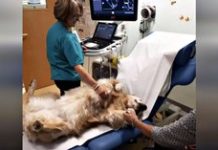Cancer patients frequently have to go through chemotherapy, radiation therapy, and other harsh treatments, which can wreak havoc on their hair and even cause it all to fall out. Luckily, it normally comes back once you’re done with treatment, but it might take a while to come back, and it could come back in a different color or texture than it was before.
For many of us, mastering the perfect routine to take care of our particular type of hair properly wasn’t easy in the first place. If your hair is different after cancer treatment, you may struggle to figure out how to take care of it. But never fear. We’ve got some practical information here to help you set realistic expectations and learn how to take proper care of your new hair so that it’s as healthy as possible.

How long will my hair take to come back?
Typically, hair that has fallen out starts to regrow within a month or two of a patient’s final chemotherapy treatment. It’s likely to start out as soft and somewhat patchy fuzz within a few weeks of finishing your treatment, but it may not be very obviously visible for a bit of time after that. How long it will take to get your eyebrows, eyelashes, and other body hair back, however, is more difficult to predict, as it varies from person to person.
How fast will my hair grow after chemo?
Following the “peach fuzz” phase, your thicker real hair will begin to grow in at its normal rate. For the average person, this is about half an inch per month, or six inches in a year, but everyone is slightly different.

Article continues below
Our Featured Programs
See how we’re making a difference for People, Pets, and the Planet and how you can get involved!
Can I help my hair grow more quickly and healthily?
There’s a limit to how fast your hair can grow, but it doesn’t hurt to do what you can to make sure it’s healthy and growing as quickly as it’s able to. Taking a biotin supplement may help thicken your hair and speed its growth. You could also talk to your doctor about whether a baldness treatment like Rogaine might be right for you.
The usual hair-care tips also apply. Avoid using heat on your hair or dipping it in chemical-laden swimming pool water. Avoid potentially damaging hair products and opt for more nourishing and rejuvenating products to help your hair stay as healthy as it can.

What kinds of changes should I expect in my new hair?
In general, drastic changes in color or texture are unlikely, but slight changes are more common. Someone with light-colored hair may see a darker hue on their new locks, and someone with originally straight hair might see some waves they didn’t have before.
Will my hair grow back at an even pace?
Sometimes, certain parts of your head will grow hair more quickly than others. It may help to get in touch with an experienced stylist who can help you make the most of whatever hair you have and wherever it’s growing.

Cutting your hair for the first time after chemotherapy won’t make your hair grow faster, but it can help make your hair look fuller (shorter hair tends to look fuller) and bring back a sense of normalcy and help you feel better about your appearance. We recommend making this moment a special occasion and celebrating it with your stylist and/or a friend.
What should I do if my hair isn’t growing back?
If your hair doesn’t seem to be growing back as quickly as it should, you should speak with your doctor about it. It could be a sign of low zinc or iron levels, or it might indicate a problem with your thyroid.
Regrowing your hair after chemotherapy is likely to take patience and won’t always go the way you planned. However, if you show your hair a little kindness and embrace your new look, you may find you feel like yourself again before you know it.
Happy hair-growing, friends!
![]()
Provide Mammograms
Support those fighting Breast Cancer at The Breast Cancer Site for free! →
Whizzco Source





